Oregon (1/2)
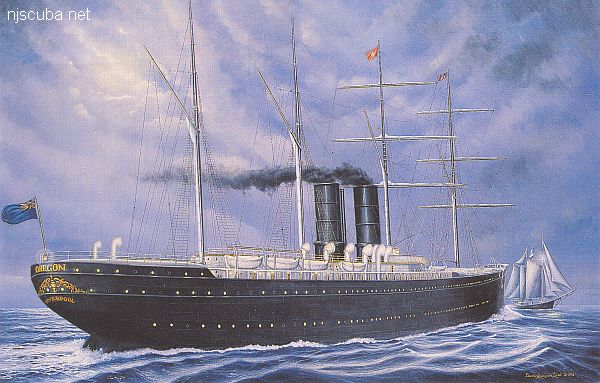
- Type:
- shipwreck, liner, Cunard Line, England
- Built:
- 1881, Scotland
- Specs:
- ( 518 x 54 ft ) 7500 gross tons, 845 passengers & crew
- Sunk:
- Monday March 14, 1886
collision, probably with schooner Charles R Morse - no casualties - Depth:
- 125 ft, highest point 85 ft

The Oregon was built for speed and luxury and set several records in the Atlantic crossing - a big deal in those days. However, while the builders may have spent lavishly on propulsion and trim, they saved by building her hull out of iron, instead of more expensive but much stronger steel, which was by then the material of choice for vessels of this type. As a result, the huge Oregon was so badly damaged when struck by a much smaller wooden schooner that she sank before she could be towed into port.
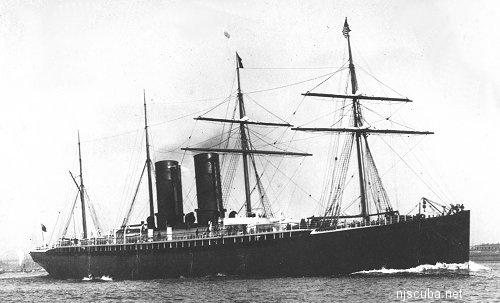
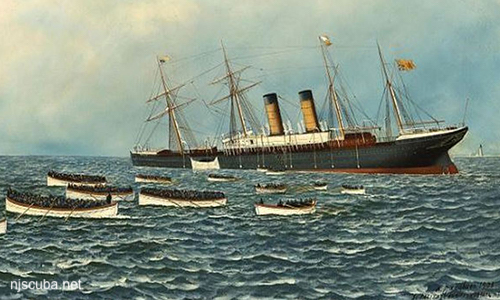
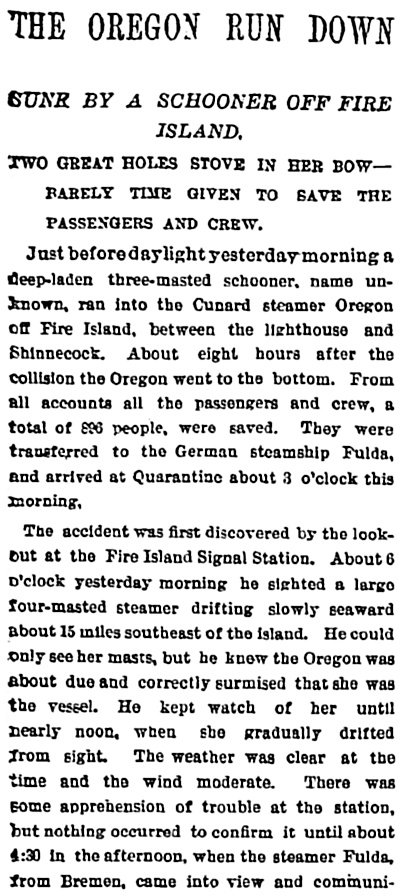
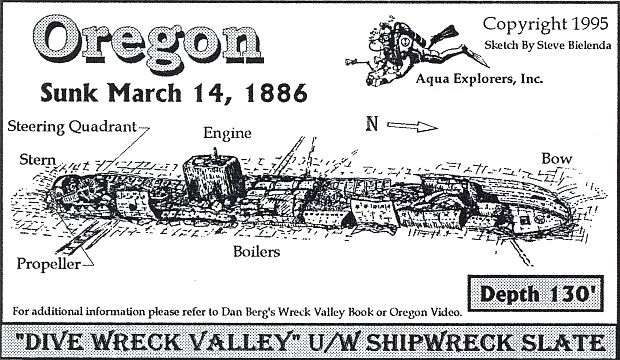
The towering engine rises 40 ft off the bottom and must be 30 ft long. The top of the triple-cylinder head lies at about 85 ft and is as big as some entire shipwrecks. The crankcase is like a cave, with numerous swim-throughs. The bottom of the engine is sunk down into the sand, and there is no evidence of the prop shaft, which is completely buried beneath fallen hull plates. The boilers and bow are off to the north, while the stern is off to the south.
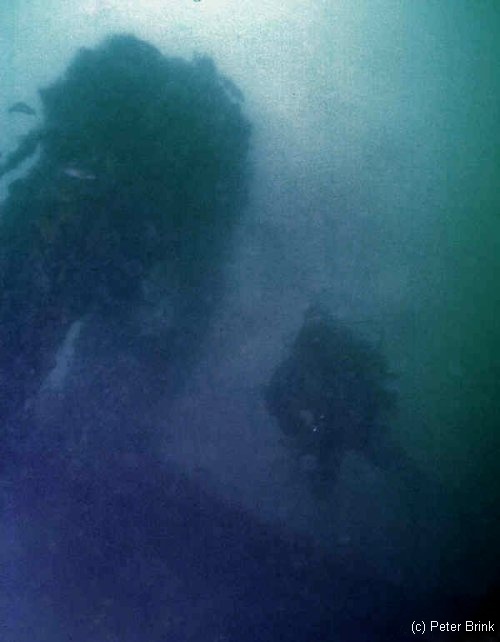
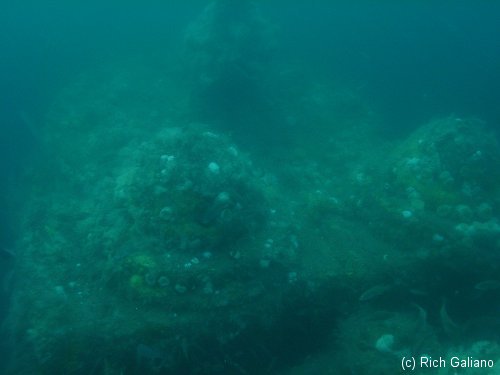
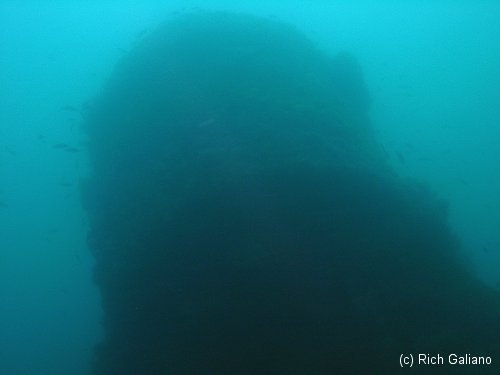
because it's just so big. This is just one end.
The starboard side of the wreck is noticeably higher than the port side, and most of the wreckage slopes down in that direction, making navigation fairly easy. The stern is marked by the enormous steering quadrant, now lying crookedly over to port. Nearby, the rudder lies on its side and can be followed down to the huge half-buried propeller.
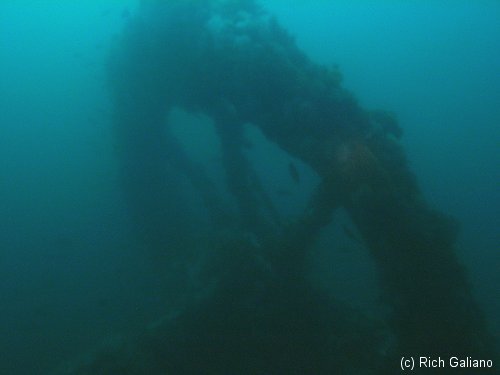

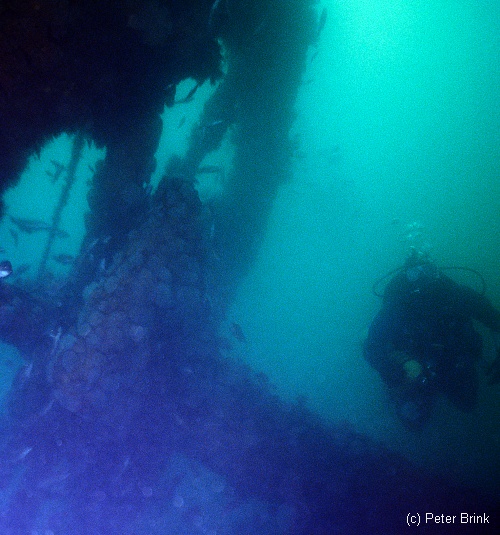
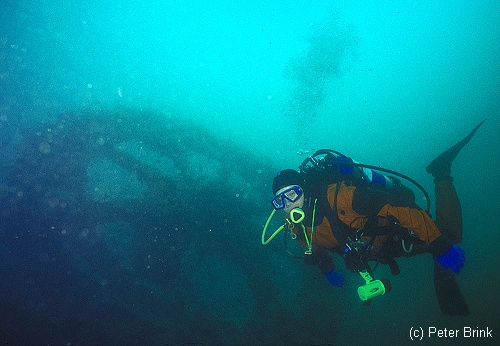
Between the stern and the engine, a fallen hull plate has a secure grip on a row of intact brass portholes, which will probably be there for years before they can be worked loose. There are not many wrecks where you can see a brass porthole, let alone a whole row of them!
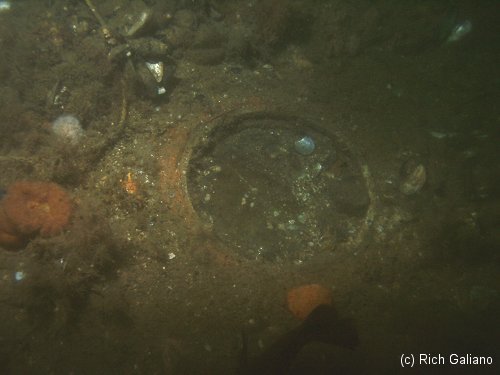

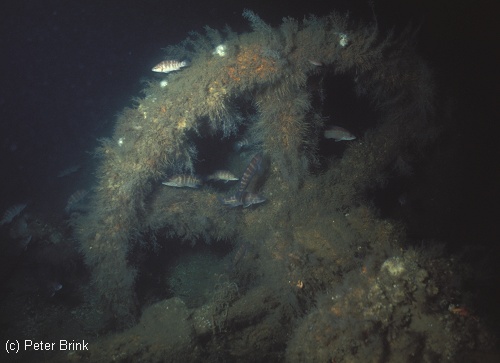
Forward of the engine, the nine boilers are arranged in a 3x3 pattern. Past the boilers, the wreck flattens, and a debris field extends off the port side. This is supposed to be the best digging area. Finally, the bow - a very long swim away - lies on its starboard side, partly skeletonized now. Visibility tends to be pretty good, 20-40 ft is common. The Oregon is a spectacular dive.
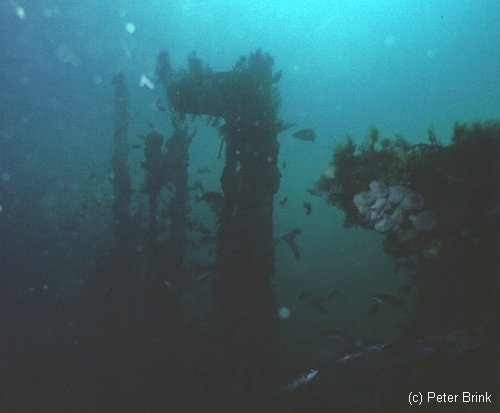
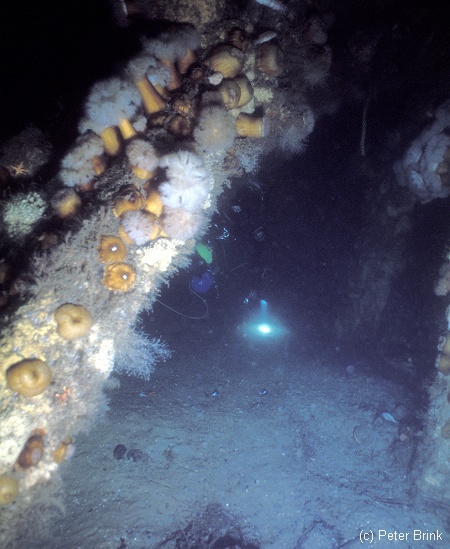
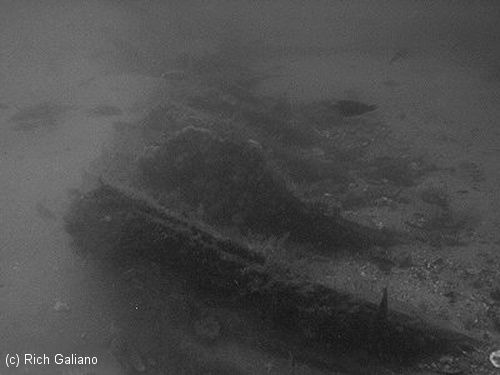

At 518 ft, the Oregon is the longest shipwreck in the region, although not the largest by tonnage. That honor would go to the Algol, or if you are a shipwreck purist, the San Diego.* Of course, the gigantic Andrea Doria is bigger than all three combined but would have to be disqualified by depth and geography.
* the Stolt Dagali was both longer and heavier, but only the stern section remains, so it doesn't count.


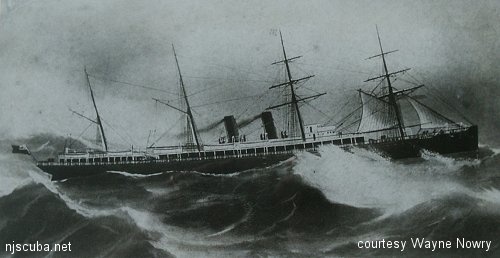
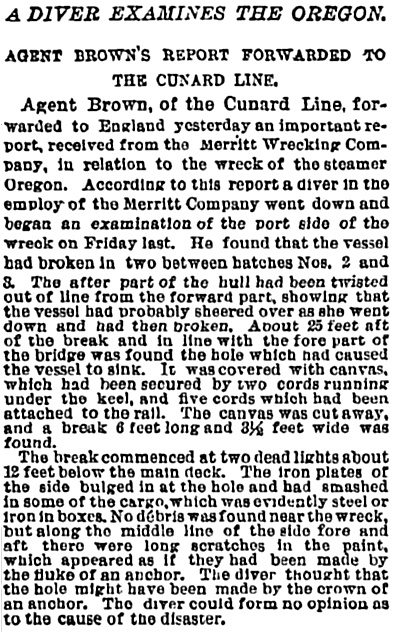
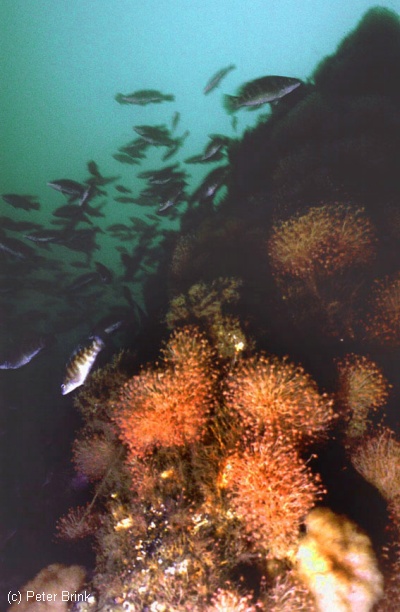


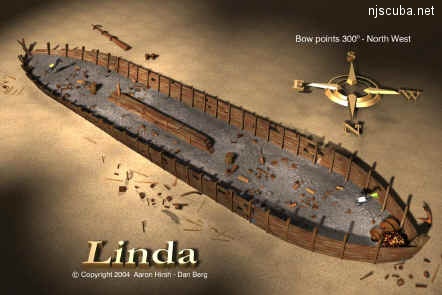

Questions or Inquiries?
Just want to say Hello? Sign the .